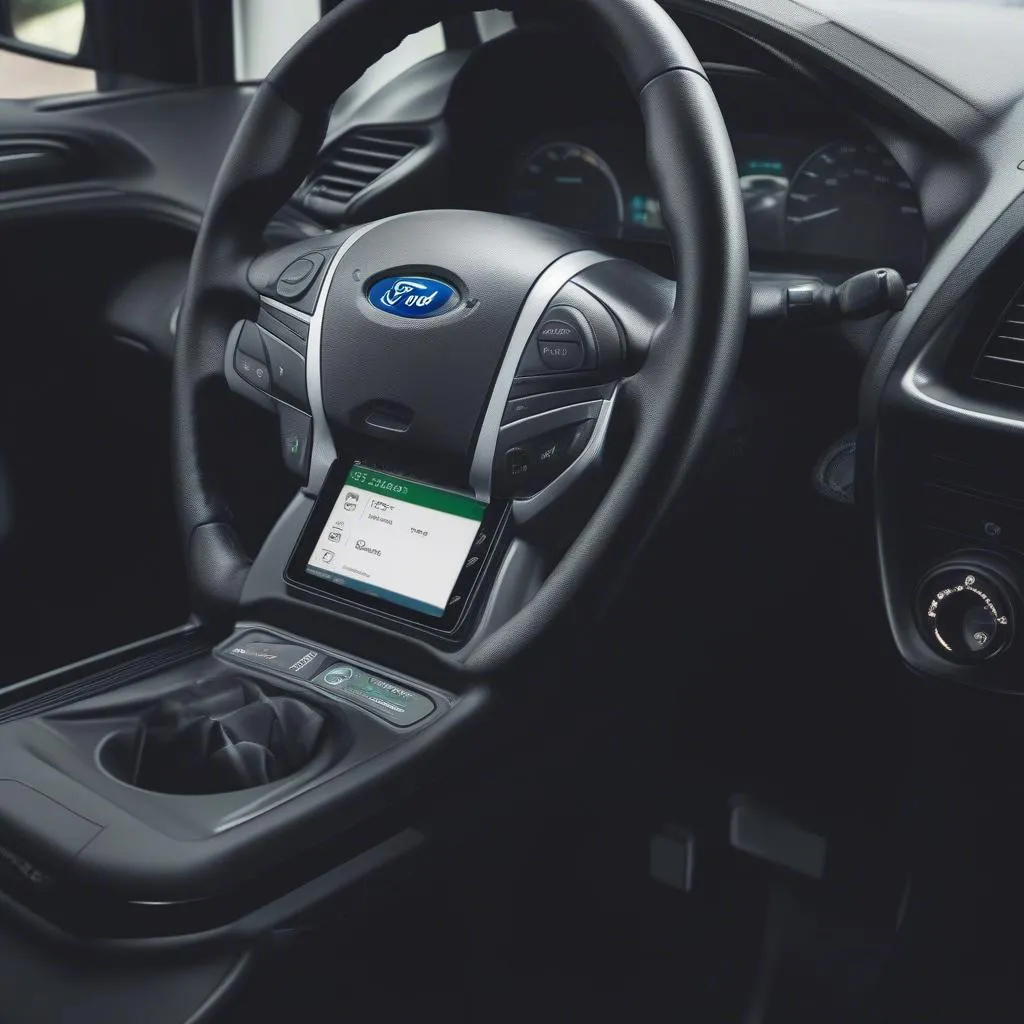You’ve just bought a used Ford Kuga, and you want to perform some basic maintenance, or maybe even a few modifications. But before you can get started, you need to find the OBD port, right? That’s where the magic happens – it’s the gateway to your car’s computer system.
This guide will walk you through the process of finding the OBD port in your Ford Kuga and explain the importance of this little connector.
Understanding the OBD Port
The OBD (On-Board Diagnostics) port is a standard connector found in most modern vehicles. It’s a vital interface that allows you to communicate with the car’s computer system.
Think of it as the car’s “black box” – a treasure trove of information about your car’s engine, transmission, and even some of the electrical systems.
Ford Kuga OBD Port Location: Where to Find it?
The OBD port on your Ford Kuga is typically located under the dashboard, on the driver’s side, near the steering column.
Tips for Finding the OBD Port
- Check the Owner’s Manual: This is the first place you should look. The manual will provide the exact location of the OBD port on your specific Ford Kuga model year.
- Look for a 16-Pin Connector: The OBD port is a 16-pin connector, usually rectangular in shape.
- It’s Often Near the Steering Column: The OBD port is typically positioned in a convenient location near the steering column, making it easily accessible.
- Consult Online Resources: If you’re still having trouble finding the OBD port, you can consult online forums or websites dedicated to Ford Kuga models. Many car owners have shared photos and helpful tips about their OBD port locations.
Why is the OBD Port Important?
The OBD port offers a world of possibilities for car owners, especially those who are DIY enthusiasts. Here are some of its key benefits:
- Diagnose and Fix Issues: You can use an OBD scanner to retrieve error codes and troubleshoot various issues in your car’s engine and other systems.
- Monitor Performance: Some OBD scanners allow you to monitor real-time data such as engine speed, fuel consumption, and even boost pressure in turbocharged models.
- Modify Your Car: The OBD port is also used for tuning and modification. This can be done through custom software that can adjust the engine’s parameters and improve performance.
- Access Vehicle History: Specialized OBD scanners can access the vehicle’s history, including service records, fault codes, and other important data.
Using the OBD Port
Here’s how to use the OBD port:
-
Get an OBD Scanner: You will need a suitable OBD scanner to interact with the car’s computer system. There are various OBD scanners available in the market, ranging from basic code readers to advanced diagnostic tools.
-
Connect the Scanner: Plug the OBD scanner into the OBD port on your Ford Kuga.
-
Select Your Car Model: Most OBD scanners will require you to select the make, model, and year of your Ford Kuga to ensure compatibility.
-
Read and Interpret Data: Once connected, you can use the scanner to read error codes, monitor real-time data, and perform various diagnostic tests.
FAQs about OBD Ports
1. Can I use any OBD scanner on my Ford Kuga?
While most OBD scanners work with modern vehicles, it’s best to choose a scanner compatible with your Ford Kuga model year. Some scanners are designed specifically for European car brands, like the Dealer Scanner For European Cars, which is compatible with most Ford models.
2. Is it safe to use an OBD scanner?
As long as you use a reputable scanner and follow the manufacturer’s instructions, it is generally safe to use an OBD scanner. Avoid using unofficial or potentially malicious software that could compromise your car’s computer system.
3. How do I find a trusted OBD scanner?
There are many reputable brands of OBD scanners available online.
 Ford Kuga OBD Scanner
Ford Kuga OBD Scanner
4. Can I use an OBD scanner to reset the “check engine” light?
Yes, you can use an OBD scanner to clear the “check engine” light. However, it’s important to understand the root cause of the warning light before clearing it. Sometimes, the light comes on due to a minor issue that can be easily resolved. However, if there’s a serious problem, clearing the light without addressing the underlying issue can be dangerous.
5. Can I modify my Ford Kuga’s engine settings using an OBD scanner?
Yes, but this requires advanced knowledge and specialized software. It’s not recommended for novice users as improper modifications can damage your car’s engine and void your warranty.
Conclusion
Understanding the OBD port location on your Ford Kuga is a valuable asset for any DIY car enthusiast. It’s a gateway to valuable information about your car’s performance, allowing you to monitor its health, troubleshoot issues, and even explore performance enhancements.
If you need help finding the OBD port on your Ford Kuga, or if you have any further questions about OBD scanners or automotive diagnostics, please don’t hesitate to contact us at Whatsapp: +84767531508. Our team of automotive experts is available 24/7 to assist you.
Remember, using the OBD port responsibly and with proper knowledge can help you keep your Ford Kuga running smoothly for years to come!